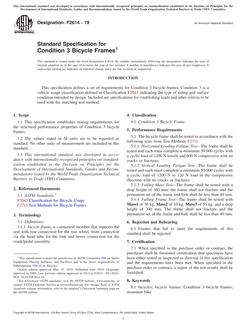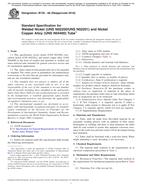1.1 This practice describes procedures and portable apparatus for determining the generic type of coating films most likely to be encountered on structures. The coating can either be weathered from exposure or be freshly applied.
1.2 Most commonly used coatings can be divided into the broad categories and subgroups shown in Table 1 on the basis of the nonvolatile component (generic types) of their vehicle (film forming resin, binder). Although the curing of some coatings involves more than one process and coatings may contain more than one type of resin, they can usually be assigned to one of the basic classes and generic types listed in Table 1.
1.3 For field exposed coatings, it is suggested that these test methods be used as part of a complete evaluation of a coated surface as it is frequently helpful to consider the environment of exposure and how the coating has performed in the environment when drawing conclusions from these tests.
1.4 These procedures will not result in the identification of components of a coating beyond general classification of the coating by generic type and are not appropriate if more detailed analysis is required, for example, as a part of failure analysis or to identify between different manufacturers of the same type of coating. They also may not be definitive enough to identify complex systems that include multiple layers of different generic types of coatings.
1.5 The evaluation of results is quite subjective. Practice and experience are required to minimize misinterpretation. Repeat tests may be required.
1.6 None of the test is to be taken alone as grounds for identifying the generic type. Only the combination of results from several or all of the tests is to be used in conclusions regarding generic types.
1.7 The values stated in SI units are to be regarded as the standard. The values given in parentheses are for in formation only.
1.8 This standard does not purport to address all of the safety concerns, if any, associated with its use. It is the responsibility of the user of this standard to establish appropriate safety and health practices and determine the applicability of regulatory limitations prior to use. For specific hazard statements see 5.3.4, 6.3.1, 6.3.3, 7.4, and 8.4.
Product Details
- Published:
- 12/01/2009
- Number of Pages:
- 6
- File Size:
- 1 file , 100 KB
- Redline File Size:
- 2 files , 190 KB


